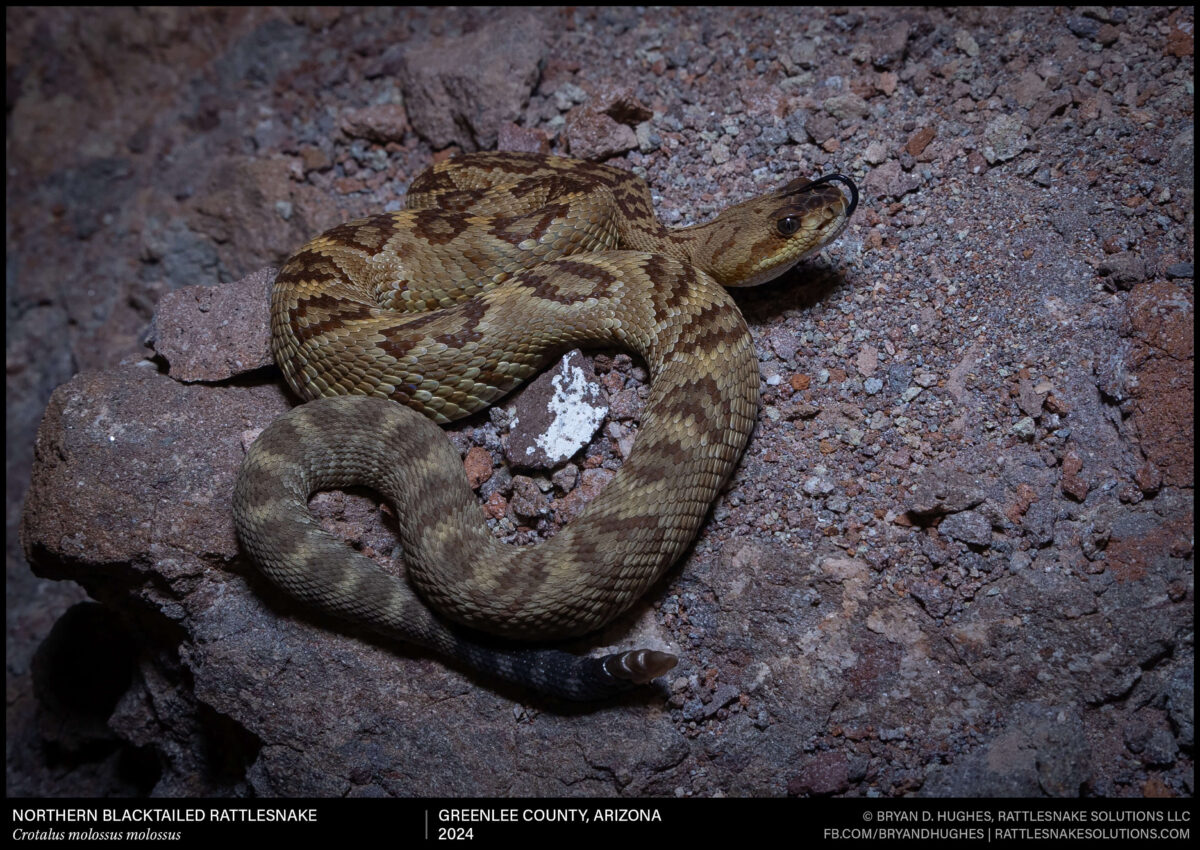A young Blacktailed Rattlesnake from the eastern end of Arizona. While not as sharply contrasted as the population from just south in the Sky Islands, I personally like the clean, subtle tones and velvety appearance of these snakes in this area.

A young Blacktailed Rattlesnake from the eastern end of Arizona. While not as sharply contrasted as the population from just south in the Sky Islands, I personally like the clean, subtle tones and velvety appearance of these snakes in this area.

I found this young Blacktailed Rattlesnake resting under the dried-out husk of a small mammal (skunk?) in a cave near Phoenix on a survey of lands managed by Desert Foothills Land Trust.
In wet years, this small cave fills with water from a few inches to around a foot deep. It becomes putrid slop, full of javelina feces and dozens of animals hiding from the heat. This small mammal had died in that water, eventually settling against this wall. This summer, the cave was bone dry. But, the dozen or so rattlesnakes that aestivate here each year still showed up.

A Blacktailed Rattlesnake was seen on a late-night hike near Phoenix, Arizona. These snakes are found in any of the regional parks around Phoenix and Tucson. Interestingly, they are missing, however, from the mountains of central Phoenix, with no records that indicate they were ever there.

A Blacktailed Rattlesnake from central Arizona. These snakes are often a green shade, leading to misidentification as a Mojave Rattlesnake (which, ironically, are seldom green in many areas). These are large rattlesnakes that live in mountainous terrain, commonly seen by hikers but rarely by homeowners.

A young Blacktailed Rattlesnake moving up from the rock wall where it lives to catch morning sun in southeastern Arizona. Structures like this provide a range of options, allowing the snake to very precisely control its temperature – warming when it needs to, and retreating to shade as the day gets hot.

A Blacktailed Rattlesnake from just north of Phoenix, found on a long night hike of remote desert canyons. These snakes specialize in mountainous, rocky habitat, and are almost never found in the flats unless moving between nearby hills. They’re large rattlesnakes and often seen by hikers and hunters.
